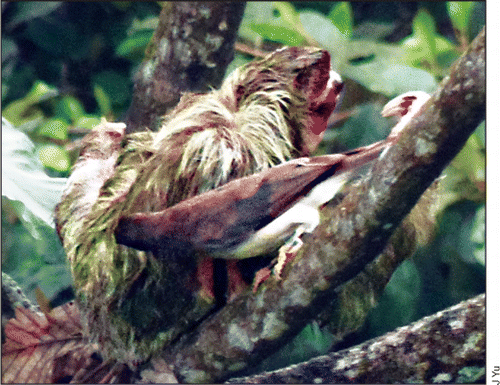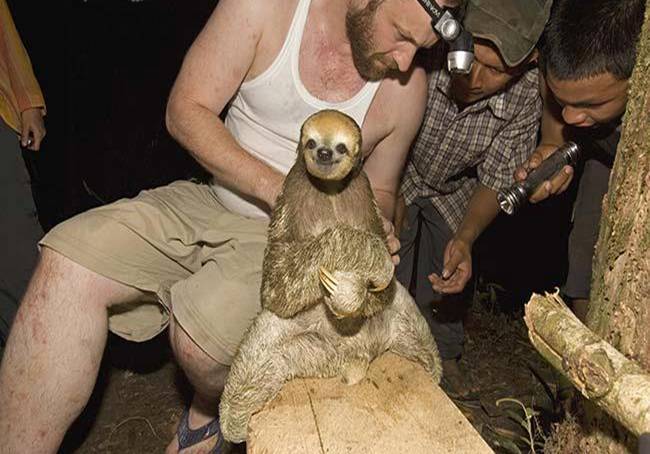Published this month in the journal Frontiers in Ecology and the Environment is a new observation that brown jays feast on the moths and other insects that live within a sloth’s fur.
A sloth’s fur is full of moths, insects, algae and fungi. The moths use the sloth’s travelling ecosystem to find mates and lay their eggs. The sloth also eats the algae that grows on itself as a supplement to its diet. Hence the pilfering by brown jays might not be such a welcome addition to this little ecosystem.
However, due to the abundance of parasites that also lives in sloth fur, the birds may be doing them a favour. In addition, brown jays may alert the sloth to presence of predators in the area, giving them a heads-up, as generally they are very slow to respond.
Understanding how organisms interact through natural history and descriptive ecological research can help us make important scientific advancements and practice conservation more effectively.
Read the entire article here.

